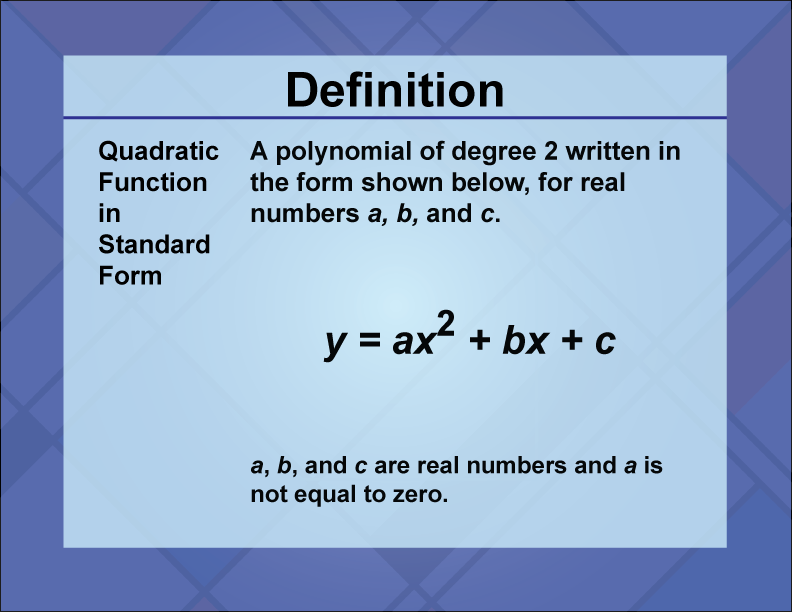
Display Title
Definition--Quadratics Concepts--Quadratic Function in Standard Form
Display Title
Quadratic Function in Standard Form

Topic
Quadratics Concepts
Definition
A quadratic function in standard form is expressed as
f(x) = ax2 + bx + c
where a, b, and c are constants.
Description
The standard form of a quadratic function is the most common representation, providing a clear view of the coefficients and the constant term. This form is essential for performing operations such as completing the square, using the quadratic formula, and analyzing the function's graph. In real-world applications, the standard form is used in modeling scenarios that involve quadratic relationships, such as calculating areas, optimizing production, and analyzing motion. In math education, the standard form is fundamental for teaching students how to manipulate and solve quadratic equations, graph parabolas, and understand the impact of each coefficient on the graph's shape and position.
An example of a quadratic function in standard form is
f(x) = 2x2 − 4x + 1
which can be analyzed to determine its vertex, axis of symmetry, and intercepts.
For a complete collection of terms related to Quadratic Expressions, Functions, and Equations click on this link: Quadratics Collection
| Common Core Standards | CCSS.MATH.CONTENT.HSN.CN.C.7, CCSS.MATH.CONTENT.HSA.SSE.B.3.B, CCSS.MATH.CONTENT.HSA.REI.B.4.A, CCSS.MATH.CONTENT.HSF.IF.C.8.A |
|---|---|
| Grade Range | 6 - 10 |
| Curriculum Nodes |
Algebra • Quadratic Functions and Equations • Quadratic Equations and Functions |
| Copyright Year | 2013 |
| Keywords | quadratic functions, quadratic equations, quadratic formula, definitions, glossary terms |